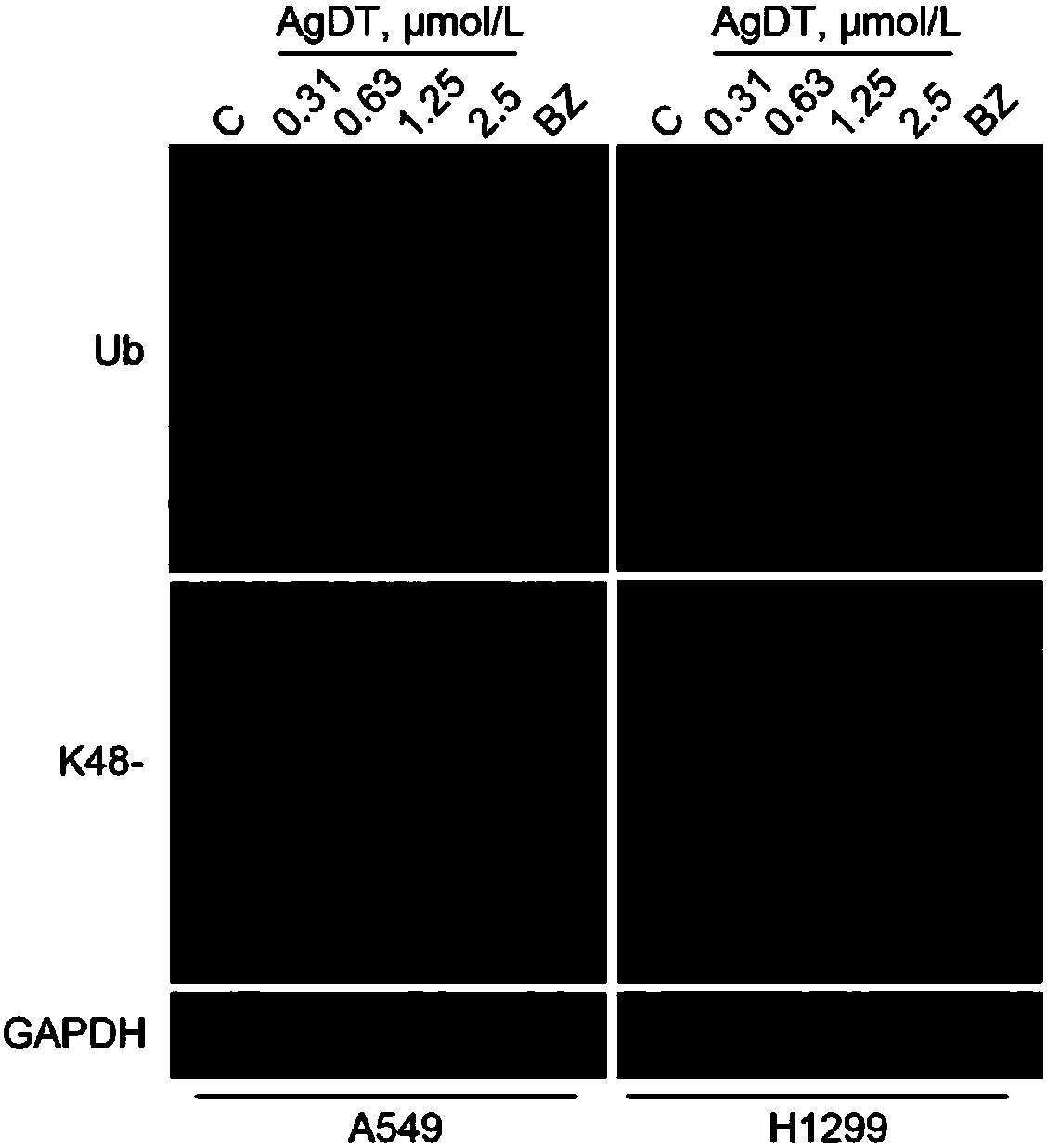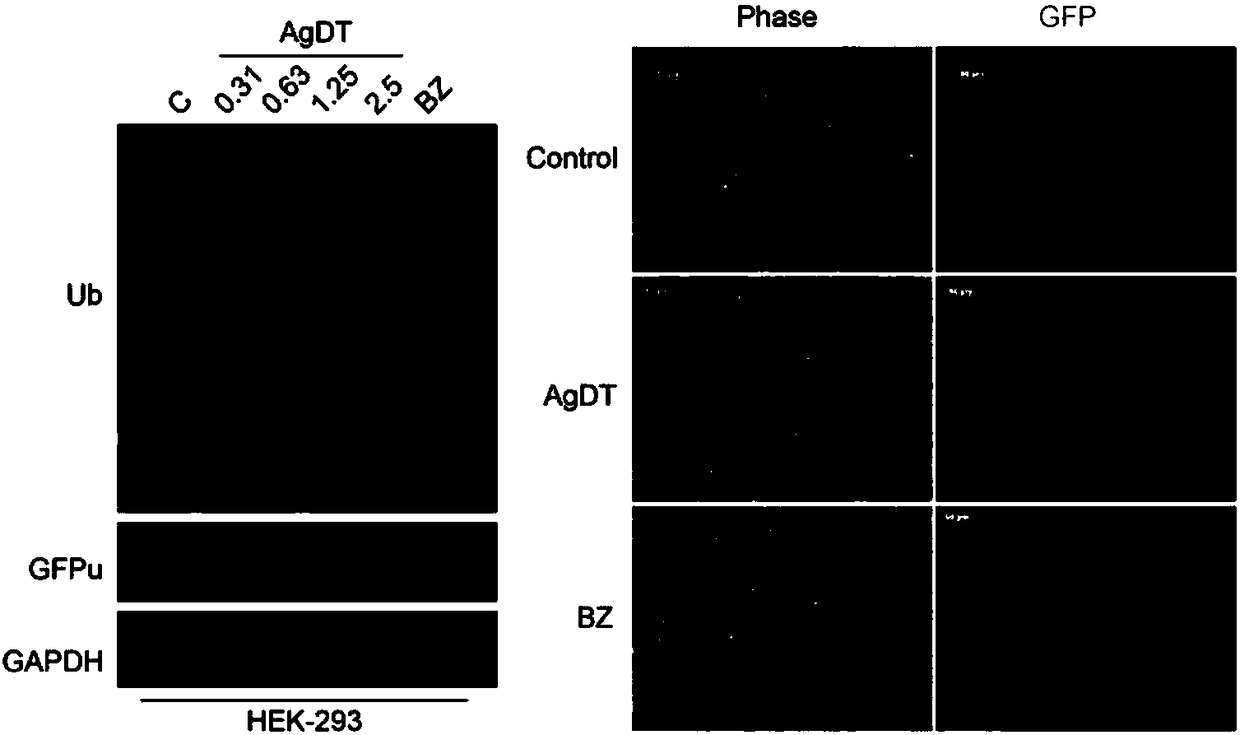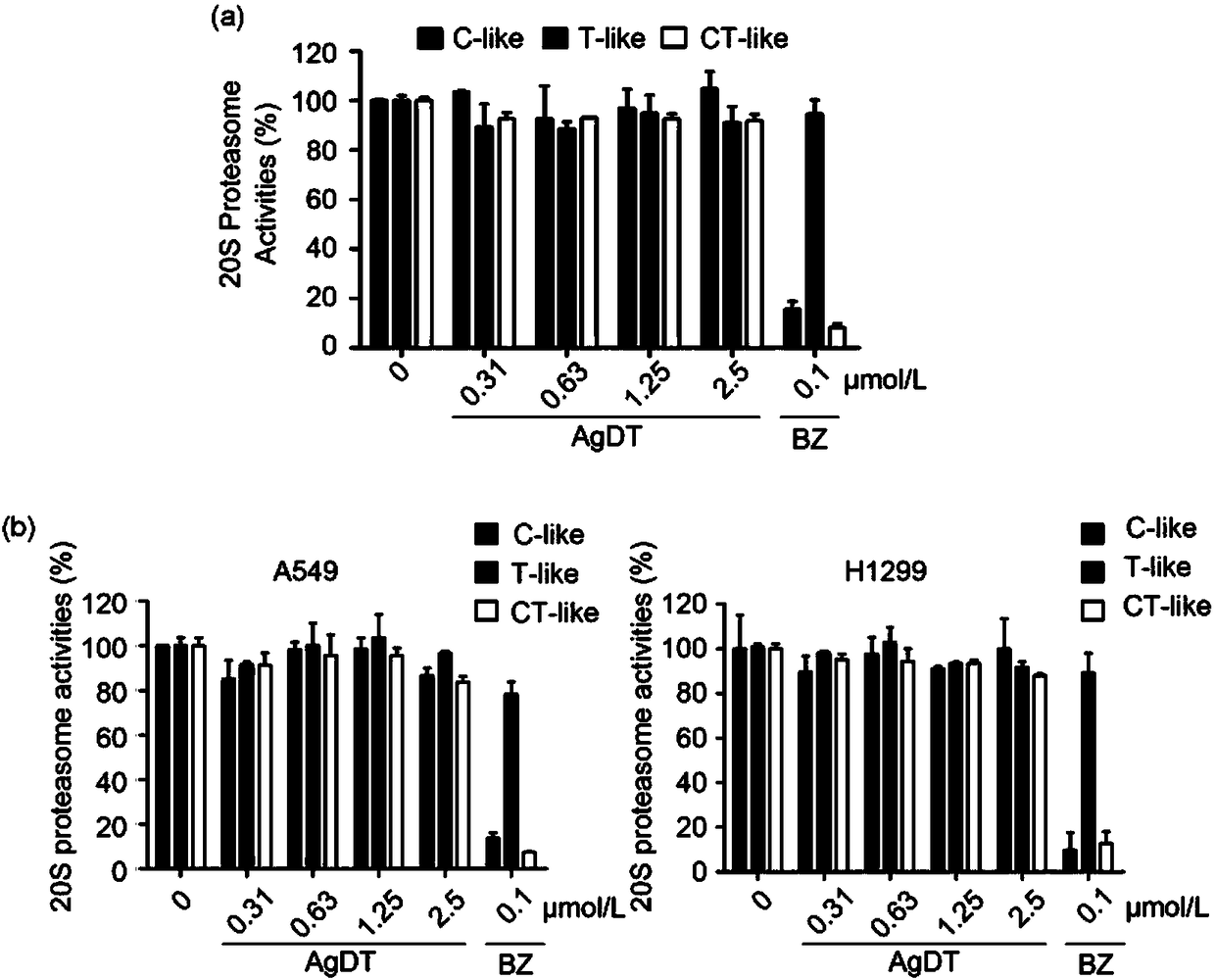Application of AgDT compound
A technology of drugs and structural formulas, applied in the field of medicinal chemistry, which can solve the problem that the mechanism of action has not been fully elucidated.
- Summary
- Abstract
- Description
- Claims
- Application Information
AI Technical Summary
Problems solved by technology
Method used
Image
Examples
Embodiment 1
[0039] Example 1: AgDT induces changes in the amount of ubiquitinated proteins in tumor cells
[0040] After different concentrations of AgDT (0.31, 0.63, 1.25, 2.5 μM) were applied to A549 and H1299 cells for 6 hours, the cells were collected to extract total protein, and Western Blot was performed to detect the expression of Ub, K48-, and GAPDH. The results showed that AgDT significantly inhibited protein degradation. See results figure 1 .
[0041] Western Blot method: 1. Configure the gel required for SDS-PAGE. First configure the lower part of the separating gel in an appropriate proportion, slowly add the configured separating gel into the gap between the equipped glass splints, and then add an appropriate amount of double-distilled water to seal; after the lower part of the separating gel is solidified, pour off the upper layer of double-distilled water and slowly add the configured Insert the comb after the good upper thickening gel, and wait for the upper thickenin...
Embodiment 2
[0042] Example 2: Effect of AgDT on proteasome exogenous specific substrate GFPu and ubiquitinated protein
[0043] After treating GFPu-HEK-293 cells (stable GFPu transfection) with different concentrations of AgDT for 12h, the cells were collected to extract total protein, and Western Blot immunoblotting (see Example 1) or fluorescent microscope in situ photographing was performed to detect Ub and GFPu. Express the situation. The results showed that AgDT significantly inhibited proteasome function. See results figure 2 .
Embodiment 3
[0044] Example 3: Effect of AgDT on proteolytic activity of 20S proteasome
[0045] Different concentrations of AgDT acted on the purified 20S proteasome, adding the respective enzymatic substrates Z-LLE-AMC, Boc-LRR-AMC and Suc-LLVYAMC to detect caspase-like, trypsin-like and chymotrypsin-like activities, multifunctional A microplate reader (350 / 438nm) was used to detect the fluorescence intensity released by AMC. The results showed that AgDT had no effect on the Chymotrypsin-like enzymatic activity of purified 20S proteasome. See results image 3 (a).
[0046] After treating A549 and H1299 cells with different concentrations of AgDT for 3 hours, the cells were collected to extract the lysate protein, and the respective enzymatic substrates Z-LLE-AMC, Boc-LRR- AMC and Suc-LLVYAMC, multifunctional microplate reader (350 / 438nm) detect the fluorescence intensity released by AMC. The results showed that AgDT had no effect on the Chymotrypsin-like enzymatic activity of intrace...
PUM
 Login to View More
Login to View More Abstract
Description
Claims
Application Information
 Login to View More
Login to View More - R&D
- Intellectual Property
- Life Sciences
- Materials
- Tech Scout
- Unparalleled Data Quality
- Higher Quality Content
- 60% Fewer Hallucinations
Browse by: Latest US Patents, China's latest patents, Technical Efficacy Thesaurus, Application Domain, Technology Topic, Popular Technical Reports.
© 2025 PatSnap. All rights reserved.Legal|Privacy policy|Modern Slavery Act Transparency Statement|Sitemap|About US| Contact US: help@patsnap.com



